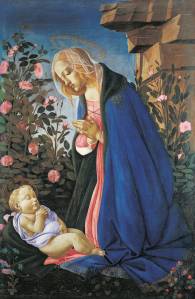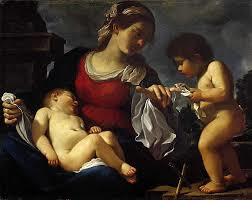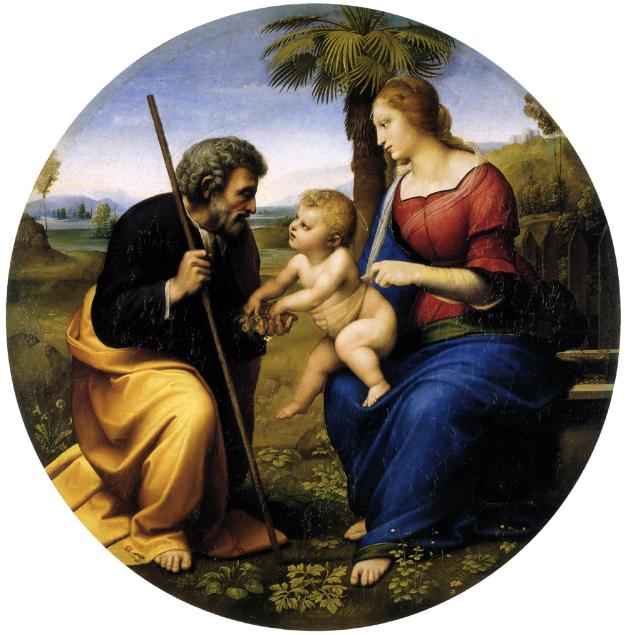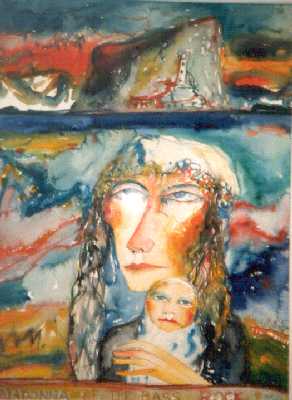In these moments of his silence
there is something the like of which I have never known;
yes, a realisation of a precious gift,
a contentment (not without worry)
and quite a simple relief,
but more:
My silence speaks to his,
our hearts meet at a point of sheer simplicity,
we rest together in a moment out of time
that transforms time,
we know something of each other that had not before been known
and I dare not try to name it
for speech would fill
that gracious, overflowing no-thing
with unnecessary noise.
But I will speak a word or two,
because the overflowing desires to be spoken:
A fragile rose
An embracing mantle
A profound rest
A tiny breath
A winding-sheet
A life
Life
Sandro Botticelli’s Virgin adoring the Sleeping Christ Child (c.1490) is in the collection of the National Galleries of Scotland.






